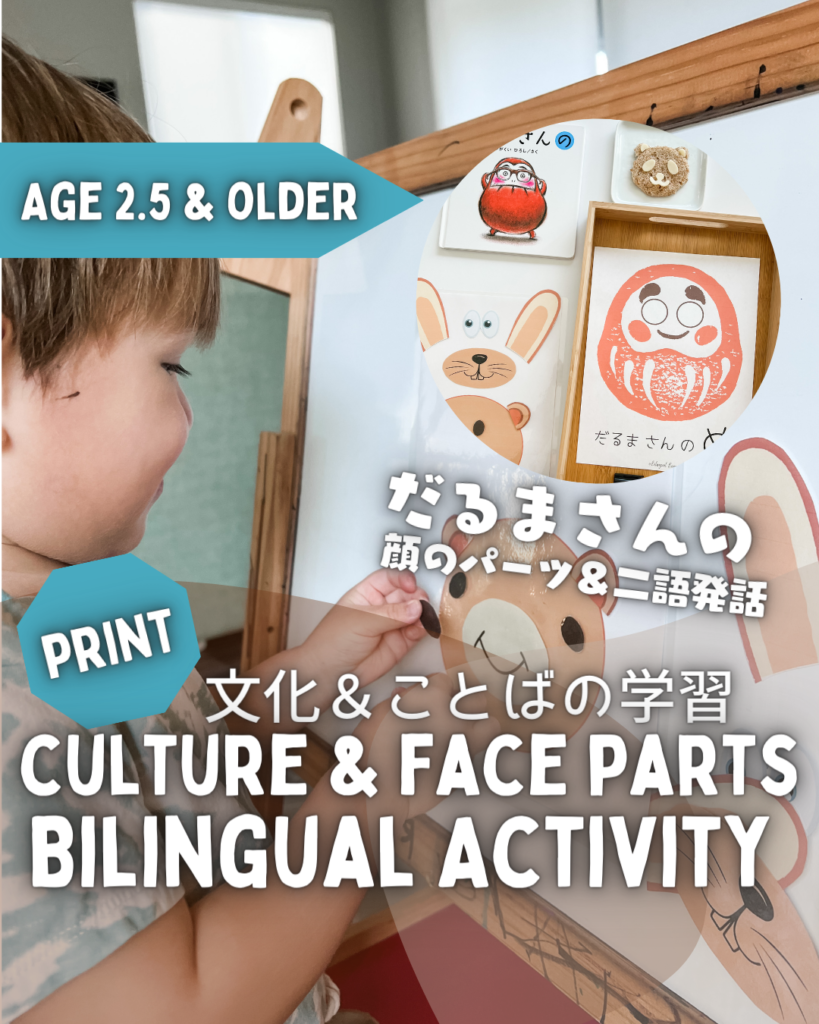Oshogatsu, the Japanese New Year’s holiday, is the most important holiday of the year in Japan. Families gather to celebrate with traditional foods called osechi-ryori. Traditionally, families enjoy fun customs and games, including mochi pounding, karuta (a card game), fukuwarai (a game where players, blindfolded, try to create a face), flying kites, and more. Through this lesson, learners will learn more about the cultural event, customs, and perspectives.
Day 1
Face Construction Activity
- Read a book interactively and construct animal faces to promote two-word speech production, using the particle ‘〜の (-no)’ to express possession such as ‘〜の め・はな・みみ・くち(-no me/hana/mimi/kuchi)’ (someone’s eyes/nose/ears/mouth).
- Relate cultural practices to perspectives on learning about the New Year’s Holiday in Japan.
- Build self-awareness skills and develop fine motor skills.
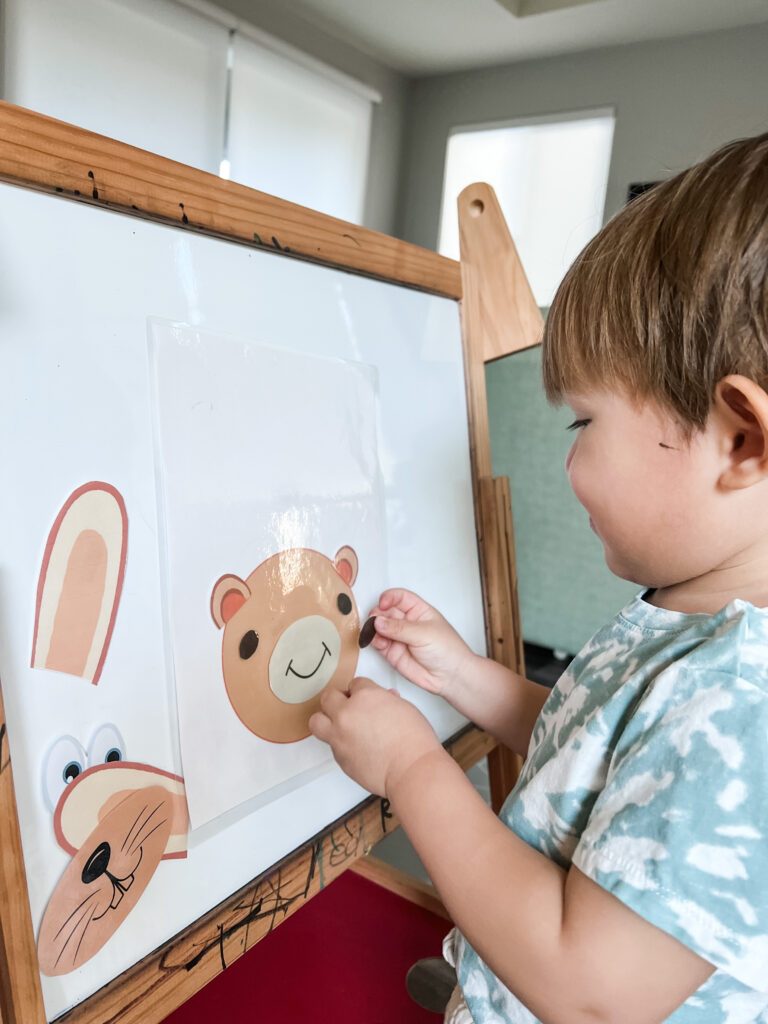
Day 2
Face Construction Activity
- Instead of interactive reading, have a learner watch an interactive presentation video and respond to the questions independently.
- Repeat Day 1 lesson.
Reflection: Play Simon Says. Ask a learner to touch their facial features while you say, “Simon says ‘〜の め・はな・みみ・くち (-no me/hana/mimi/kuchi)’ を さわって (Please touch)”.

Day 3
The Daruma Tradition
- Repeat Day 1 interactive reading with the same book
- Using calligraphy, have the learners engage in the tradition of filling in the Daruma doll’s left eye while making a wish to come true in the new year.
- Relate cultural practices to perspectives on learning about the New Year’s Holiday in Japan.
- Promote fine motor skills and imagination.
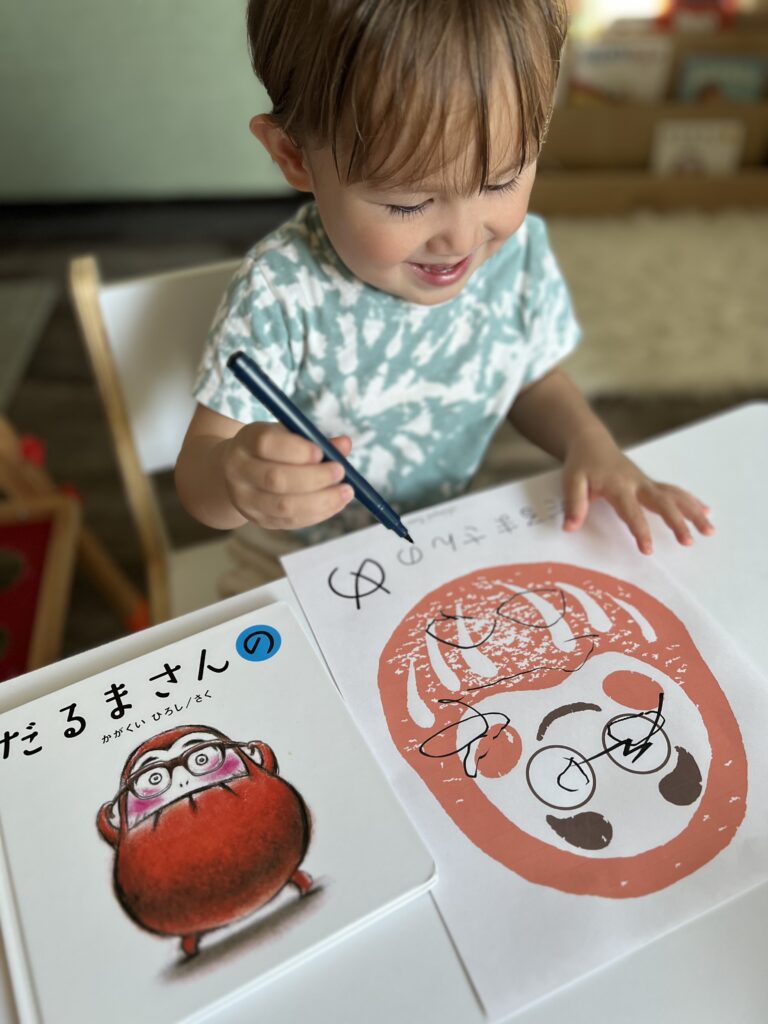

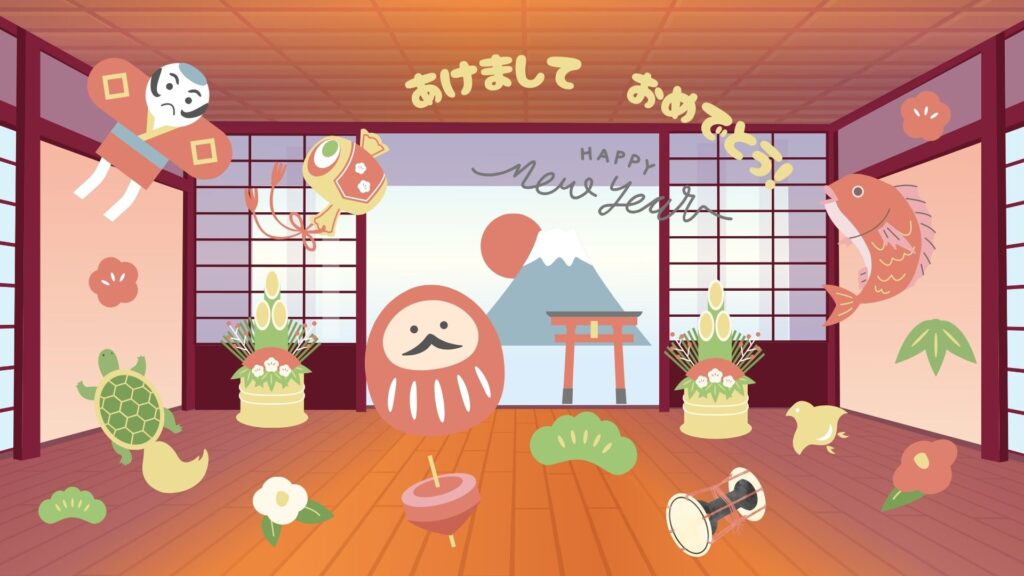
Before the song video, follow the below steps:
- Show the image of the New Year’s Holiday and introduce Oshogatsu (New Year’s Holiday) by saying, “Oshogatsu is the most important holiday of the year in Japan. We eat a special feast called Osechi-ryori and decorate our homes with many traditional items.”
- Ask a pre-listening question: “Now, we’re going to watch Daruma-san’s staring contest song video. Can you find out what kind of game this is?”
After watching the video, ask the learner, “What can you NOT do during the contest?”. Scaffold their understanding of the rule: “You cannot laugh during the game. If you do, you’ll lose.”
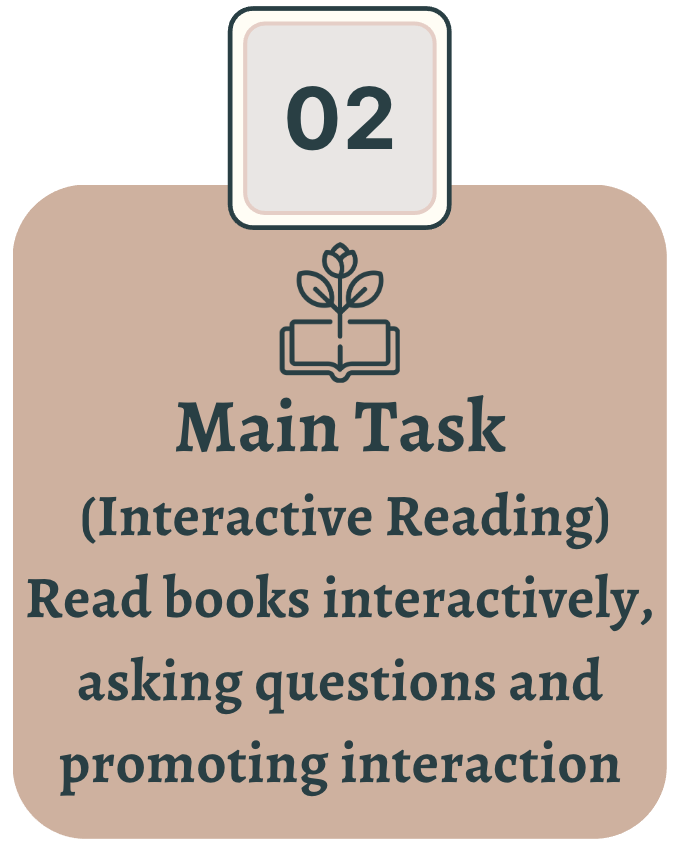
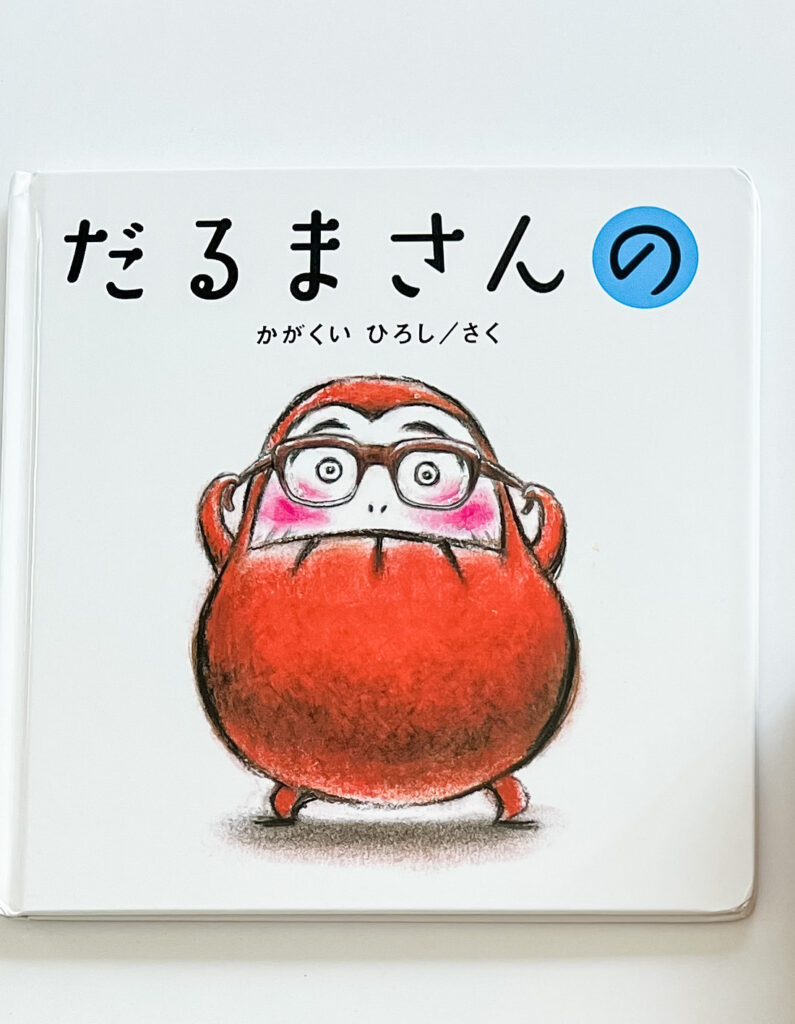
Read the book だるまさんの (Daruma’s) interactively which is such a silly, fun, cute book for little children.
For the book information on Amazon➤
How to read interactively? Ask questions or offer commentary to promote the child’s comprehension and curiosity. Here are some example comprehension questions you can ask in a child’s first or target languages:
“Are Daruma-san’s eye small or big (Daruma-sanno me wa chiisai, ookii)?”
“Do you like Daruma-san’s hair (Daruma-sanno ke suki)?”
“What would Daruma-san’s teeth be like (Daruma-san’s ha wa donna ha)?”
“Which part of Daruma-san was the funniest (Daruma-sanno dokoga ichiban omoshirokatta)?”
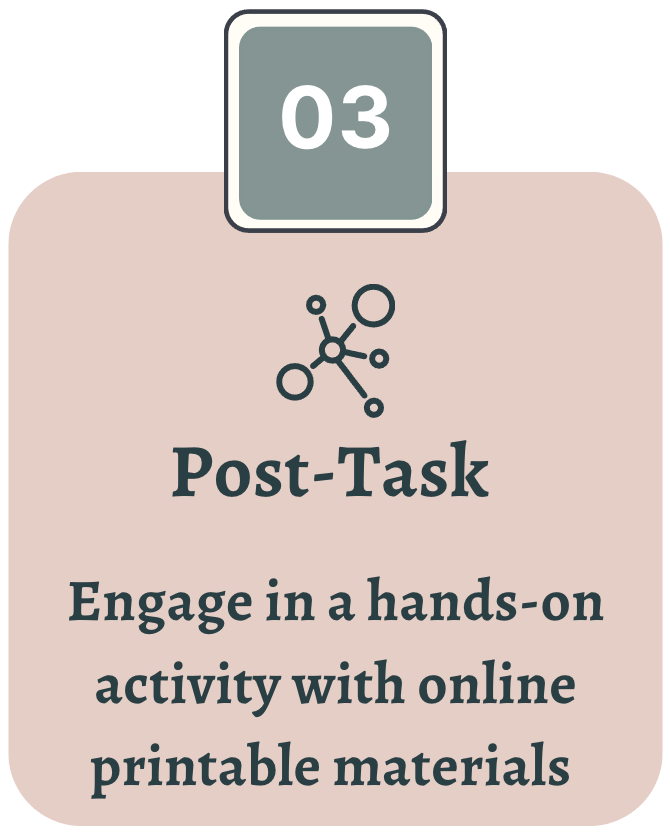

Enjoy animal face construction using the names of face parts: ‘め・はな・みみ・くち (-no me/hana/mimi/kuchi, meaning someone’s eyes/nose/ears/mouth)’.
- Using the cut-out face parts created from online printable materials, show each face part and have the learner guess which face part it is and/or whose face part it is.
- Demonstrate the language and encourage imitation of the adult’s speech with strong support from gestures, promoting back-and-forth conversation. Focus on using the particle ‘〜の (-no)’ to express possession, such as ‘〜の め・はな・みみ・くち’ (-no me/hana/mimi/kuchi), meaning someone’s eyes/nose/ears/mouth.
Click below to see the activity video on Instagram↴

Repeat Day 1 pre-task using the same image and song, as shown above, and follow the below steps.
- Show the image and remind the learner of the symbolic items associated with the New Year’s Holiday.
- Have the learner watch the same song from Day 1, then ask how to play Daruma-san’s staring contest and play the game with the learner.
- Tips💡: On the second or third day of using the same song, shift the focus from providing input to encouraging the learner to produce language by singing autonomously, with or without an instrument, and with or without the video.

Watch the presentation video about the New Year’s Holiday and have the learner respond to it interactively while watching.
- Perspectives 📝: This is when they discover and learn about the tradition of drawing an eye on the Daruma doll around the New Year’s Holidays, as a way to set goals. People make wishes for the coming year and paint Daruma’s left eye (the right side if you face it) and paint the other eye once the wish comes true.

Repeat Day 1 post-task activity: Animal face construction using the names of face parts ‘め・はな・みみ・くち (-no me/hana/mimi/kuchi (someone’s eyes/nose/ears/mouth)’.
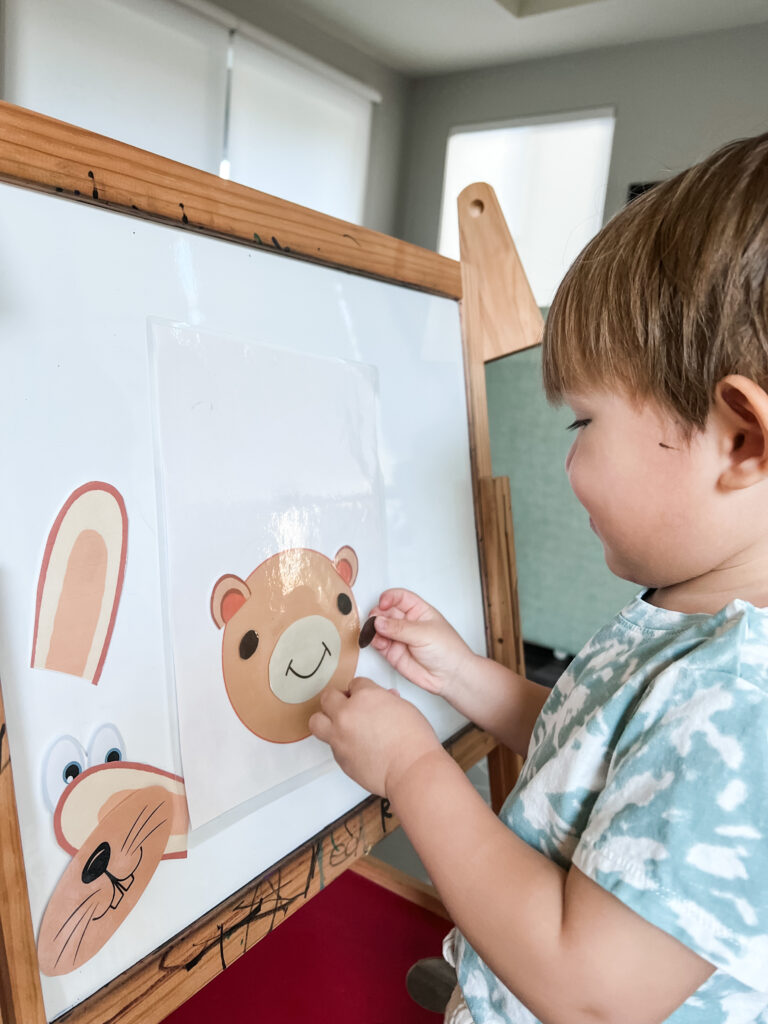
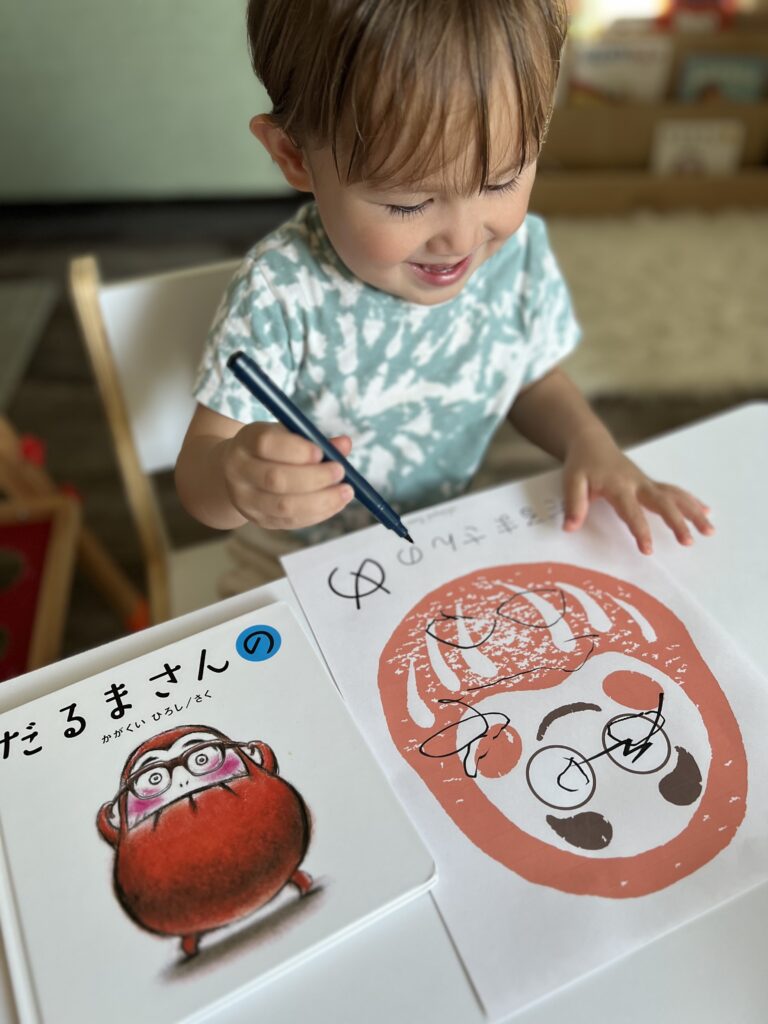
Repeat Day 1 pre-task, using the image and the song including playing Daruma-san’s staring contest, as well as the main task of interactive reading with the same book.
Now, it’s time to enjoy participating in the tradition of filling in the Daruma doll’s left eye while making a wish for the new year, using calligraphy. But before the activity, do the following.
- Show the printed material of a Daruma doll. Ask what’s missing in the image, encouraging them to say “Daruma no me/hana/mimi” (Daruma’s eye/nose/ears) using the particle no.
- Scaffold the learners’ understanding of why people draw eyes on the doll around New Year’s. It is a way to set goals for the year, representing work ethics in Japanese culture. For young learners, simply say, “しんねんの ねがいごとを するよ” (make wishes for the New Year).
As reflection, enjoy the following activities:
- Have a learner watch the same presentation video and respond to the questions independently. Assess how they can express the target vocabulary and phrases interactively while watching. Click the button to download the assessment rubrics.
2. Visit and participate in Oshogatsu (New Year’s Holiday) cultural events to interact with community members, if available.

